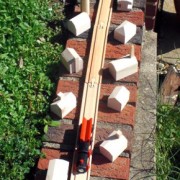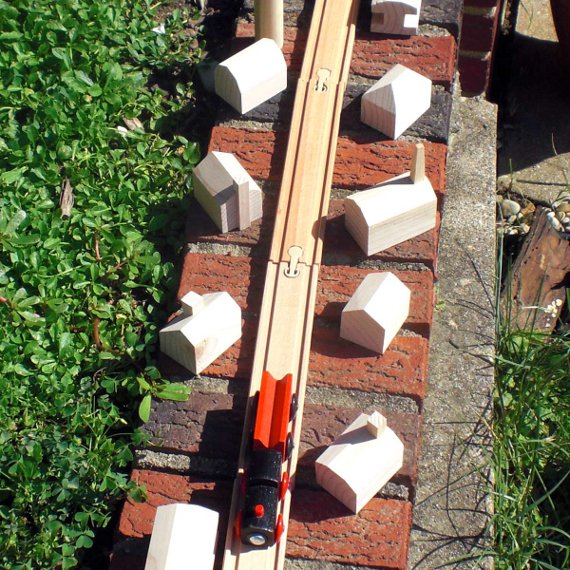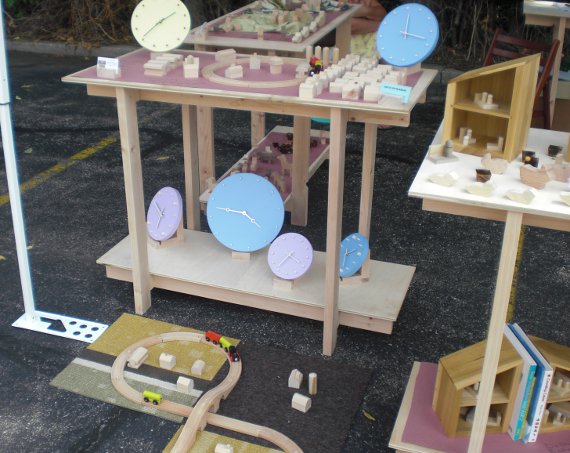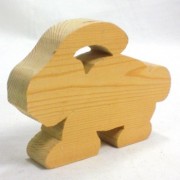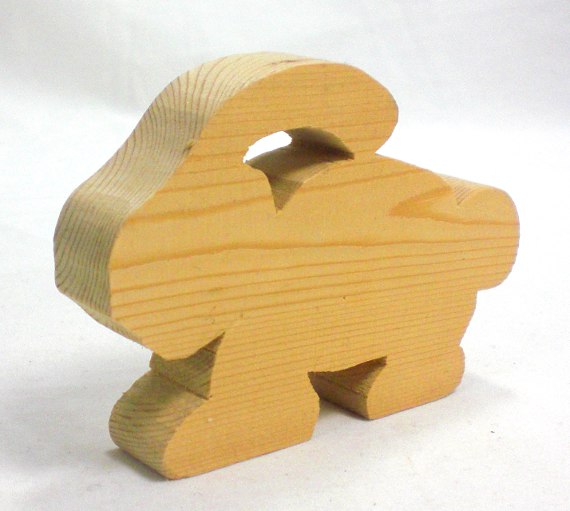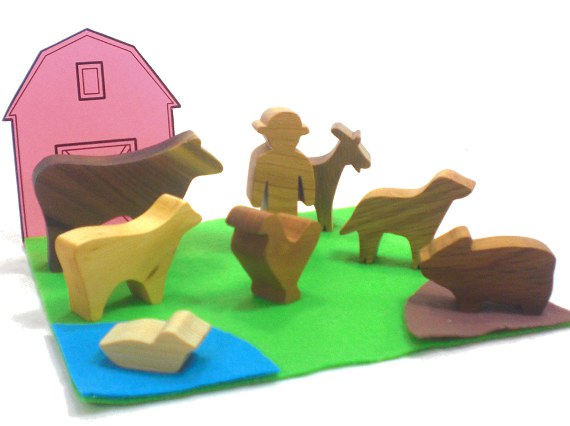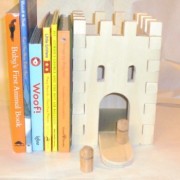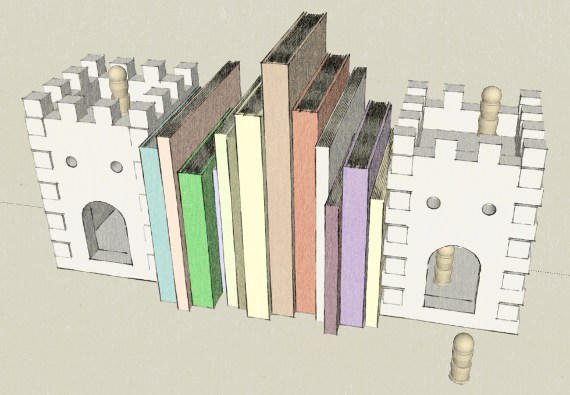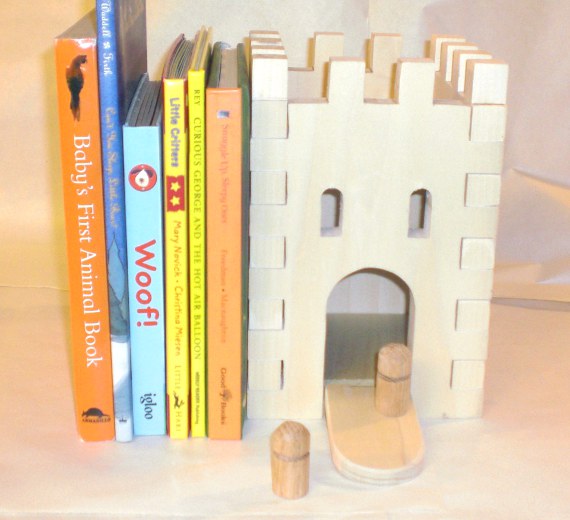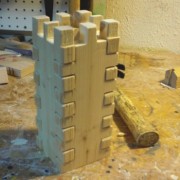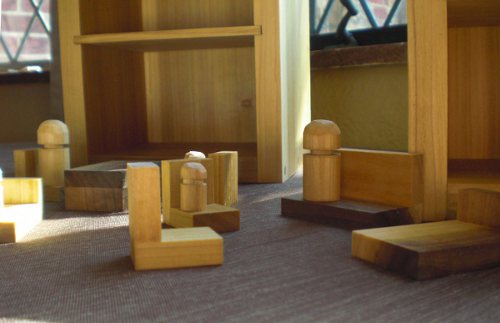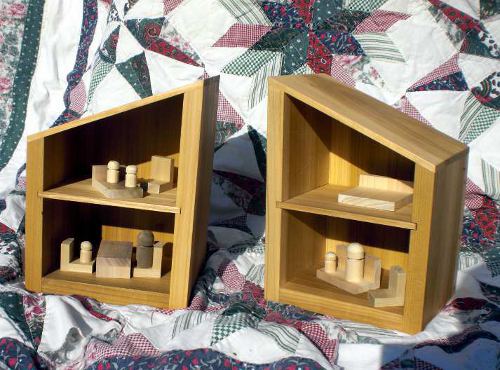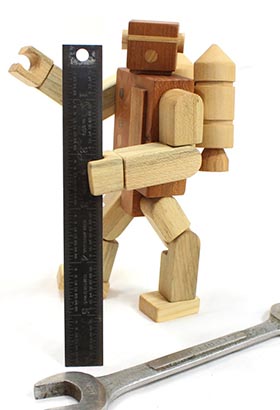Throw Back Thursday – Too Many Train Buildings
Just because you make it, doesn’t mean they’re going to buy it. Say like you make 300 and some odd little toy train accessory buildings for your first craft show (that’s modestly attended by the way). Let’s say you make all these buildings. Not everyone wants to buy them. You can worry all you want that you’re not bringing enough product, but there’s no need to. YOU WON’T RUN OUT.
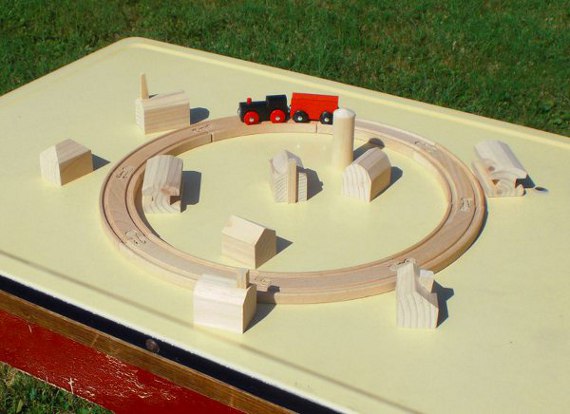
Ok. I didn’t expect to sell 300 little buildings at my first [small] craft show, but there was like 12 different kinds of buildings, so there’s only 20 of each type . . .
We’ve had big runs on one items at shows before. You know, big shows in the Fall when people can’t buy enough cool toys.
The train buildings were one of the first Happy Bungalow toys. The thinking was: everyone sells those little toy train track and magnetic trains, but accessories are hard to find. And if you can find any buildings, they’re always painted. How about some plain and simple accessory buildings? Guaranteed to sell right? We identified a product missing in the marketplace. A NEED that all those business books always talk about.
Being one of our first toy lines, it took a while to figure out just how to cut the wood safely. The saws in our shop cut fingers just as easily as they cut wood – and these toys are so small – and if you don’t/can’t hold the wood firmly in place it will fly away from the machine at high speed. So once we figured out the techniques and process we maximized our tool setup overhead and ran off a few hundred buildings.
For our first show we put together a train demo display on the ground for the kids to play with (see below). Then on the table above we lined up a few dozen of the buildings. We really fussed over the best train layout too. Probably went through a half dozen configurations beforehand (don’t miss those days). So it was a lot of work, you follow? And did it pay off? Did it pay off?! The NUMBER ONE product people wanted to buy that day?
Yeah, the trains. The dumb old trains. The only thing on display that we didn’t make. [insert Charlie Brown hopeless sigh]
This was the first and only show the train and tracks were ever displayed at. The buildings come to shows from time to time, and they do well enough. Though we still have a box full of the suckers.
For all the fussing about the layout we did come up with a cool idea for the table toppers – using a sort of butcher paper that we wrote little product descriptions and prices on.
A note about the first two pictures. They were part of our first photo shoot. We drug furniture, ladders, props, and back drops out into the back yard. Spent and afternoon shooting hundreds of pictures and another afternoon editing them. Eek.
Read the rest of our Throw Back Thursday series here.

